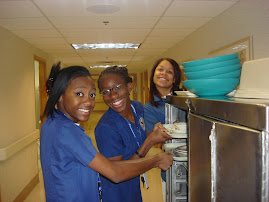
Using a photo-sharing site has tremendous potential in the HCE classroom. There are so many pictures out there of body parts, systems, and maladies that it is a wonderful teaching tool. I use pictures in my lesson plans to help emphasize anatomical locations, disease process and often, care of the patient too. Pictures are great communication tools. Pictures help me to prepare my students for what they might see when they get to their clinical site. It is much better for them to get the giggles, yucks and oh gross! (es) out of their system before they see it at the hospital.
Photo-sharing sites would also prove useful for sharing photos between class periods. They are used in projects, and to add to research papers. I give extra credit for community service or fund raising walks, and the students bring in a picture and summary of the event to prove their participation. Again, a photo-sharing site would work really well.
As for a couple of specific assignments, a lesson plan might look like this: research an integumentary disease. Your paper must have the etiology, signs/symptoms, treatment and prognosis. Include pictures of the disease within your report.
IE: Vibrio bacteria.
They are a family of bacteria that live in warm sea water and are found throughout the world but are particularly common in large gulfs in tropical areas such as the Bay of Bengal, the Gulf of Mexico and the Gulf of Carpentaria. People with poor immunity, particularly those with chronic liver disease, can get the infection through the skin, when cuts or abrasions are exposed to sea water, or through ingesting contaminated food or water. The infection can start as a wound infection and can quickly spread to cause overwhelming and life threatening bloodstream infection. Once established, bloodstream infection with Vibrio bacteria has a 50 per cent mortality even with the best treatment. The bacteria are found in tropical waters and so can potentially be acquired anywhere along the north Australian coast. However, the reported serious infections in the NT were all acquired in the sea or rivers around the south-western shore of the Gulf of Carpentaria - near the Sir Edward Pellew Group and Limmen Bight. Fortunately, severe infections with Vibrio are rare. Since 2000 there have been only 4 serious infections of people in the Northern Territory. (see photo above)
You get the general idea. The more gruesome the picture, the interest most of them have. It also creates a good shock factor. If the students can’t handle the pictures, they probably really don’t want to go into medicine.
Other uses could include pictures of diseased vs. healthy livers, using photos as flash cards to learn identification, location and terminology.
I don’t have a major concern with the students searching through shared-photo sites. As a nurse and a teacher, if they find something inappropriate (which I am 98% sure may not be an accident) I would rather use it as a teaching moment then get angry with them, or worry about me or them getting in to too much trouble. Of course we do follow school policies!



No comments:
Post a Comment